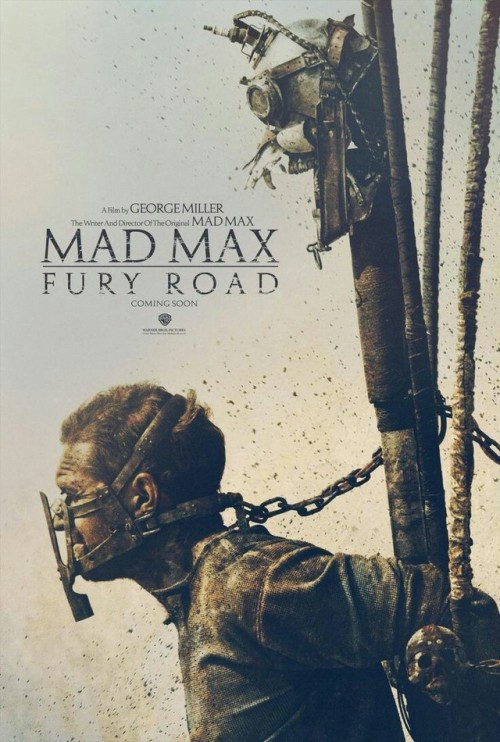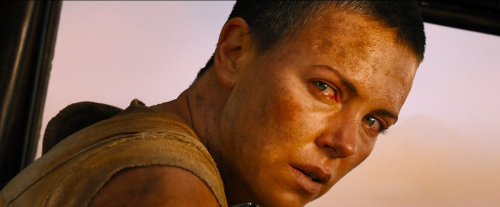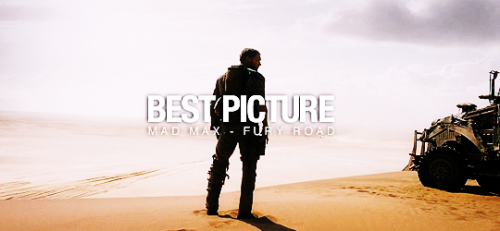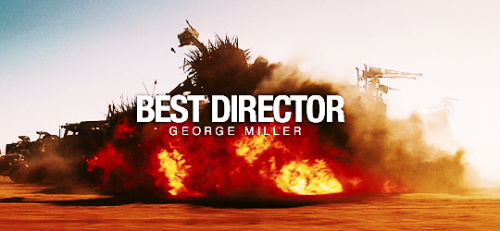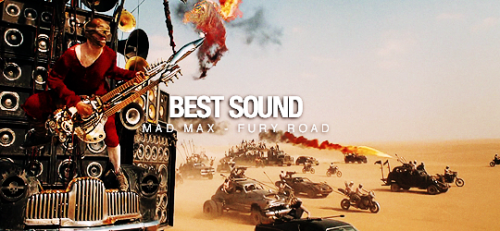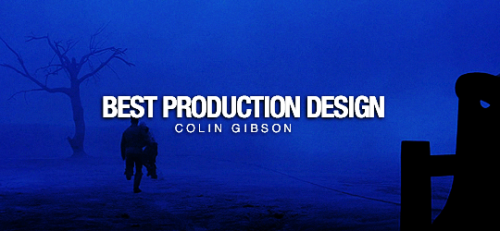#george miller is a genius
Furiosa looking at Toast and Joe / Furiosa looking at Max
These pairs of shots are only a couple of minutes of screen time apart. The first is right after she gets stabbed and the second is about two minutes later.
It’s not just that she’s all defiance and badassery in front of Joe and can show pain and fear and vulnerability when she’s looking at Max. It’s that in two minutes, her condition has gotten noticeably worse, we can see it, and we’re just as scared for her as Max is.
The moment where it always hits me is when she pulls the knife out of her side and her hand is shaking. This is a woman who can hold a rifle shot steady while balancing on the dash of a moving truck. It’s a tiny thing that only we see, the kind of thing she might hide from everyone around her, but it tells us that this injury is serious.
“I’ve been in movies where I’ve gotten shot three times and I continue to act, just stumbling through moments. I love that in this high-octane action world, I get stabbed once, and 20 minutes later, I’m almost dying from it, which is real, completely real.” - Charlize Theron (x)
h/tbassfanimation for prompting me to find this shot comparison
Post link
There’s a post going around talking about how much people appreciated Blackbeard’s leg brace as a mobility aid in a character like him and it got me wondering how many people watching the show are familiar with Mad Max beyond the most recent installment. I know that there is a general awareness that Blackbeard’s outfit is an homage to Mad Max but like…is everyone APPRECIATING what a brilliant choice it is on multiple levels???
Mad Max’s Road Warrior look is an iconic bit of 80s action movie nostalgia. It comes from the second Mad Max movie and is, in and of itself, a brilliant piece of visual storytelling (a hallmark of Mad Max movies as a whole) because it sums up Max as he is at the end of the first movie: a man in mourning whose physical and mental trauma is made explicitly visual by the knee brace that alludes to the climactic showdown of the first movie.
However, because the broad cultural understanding of any character will always sand off the details of that character, the popular read on Max is that he’s a cool action hero. So, Blackbeard’s clothes are pretty instantly recognizable and immediately give the viewer, at the very least, an idea that Blackbeard is supposed to be an ass-kicking bad-ass. So far so good - we’re tapping into the persona that Ed wants to present as Blackbeard.
What people tend to forget is that Mad Max is pretty explicitly a series of stories about a man who does NOT want the role he’s been given in the story. Max is not mad-as-in-angry, he’s mad-as-in-crazy (there’s a whole other conversation to be had about how those movies handle mental health but that’s another kettle of fish). Trauma breaks Max and the rage-fueled revenge bender of the first movie leaves him at his lowest point, providing no catharsis. It actively makes him worse in every way and the movies never suggest otherwise. He doesn’t even begin to heal or move past that until arguably the third movie, but more realistically the fourth. Throughout all four movies, Max is defined as a character who is trapped in the role thrust upon him and largely cannot form close connections with the people around him because of that. He is not a person, he is violence personified and he hates it.
The Mad Max movies have always been, at their core, about masculinity and its relationship to violence and heroism. Part of the reason Max is read so incorrectly in pop culture is that the movies do have a lot of blood and violence and Max dishes out his fair share. These are the parts that stick in the mind long after the movie is over. The problem is that every other moment in the movies makes it clear that doing these things is harmful to Max. After the first movie he goes out of his way to avoid violent confrontation. In fact, he even actively avoids helping people who are presented as “good” because he knows that the weight of their problems will fall solely on him, without regard for what it does to him.
Ed’s entire arc in OFMD is about his relationship to his own masculinity and his relationship to violence, the latter being something that is explicitly performative for him. He embodies a persona of toxic hyper-masculinity but claims that he’s never killed anyone since killing his father. He’s willing to utilize violence but it’s clear that he doesn’t enjoy it the way people’s mythologized conception of Blackbeard would make it seem like he should. He sheds some blood, lets other people do the killing and no one notices the slight of hand involved there - the fuckery, if you will - because he’s so good at presenting himself as the kind of man they want him to be.
Not for nothing, Mad Max is also a series of movies that is very interested in gender, sexuality, and queerness. Not necessarily always in a positive way, but certainly it is a central theme through all of the movies, because sexuality is inextricably tied up in white, Western views of masculinity. I’ve long felt - and I think the text does support this, albeit perhaps more through accident than intention - that one way to read the original Mad Max is as a movie about a man struggling to accept that he may not be straight. I personally read Max as bisexual but that’s a whole other post to make.
All this to say: I don’t think Blackbeard’s Mad Max look is just a funny gag and the visible mobility aid is just one part of a broader context that it’s working in. It’s an incredibly astute allusion to another piece of media that has grappled with the central themes of Ed’s character and provides us with a ready-made visual to signal exactly what we need to know about Ed as a person.
lies:
Favorite world-building elements: Realistic depiction of trauma
One of the things that makes Fury Road so immersive is the way it presents the result of violence. Unlike movies in which characters shrug off what in the real world would be horrific injuries*, the inhabitants of the Wasteland experience the full effect of the bad things that happen to them.
Some examples:
- Angharad’s graze wound. When Max shoots The Splendid Angharad in the leg, we see a close-up of the injury. When Furiosa asks her how it feels, she says, “It hurts,” and it apparently is a factor in her subsequently slipping from the war rig and being crushed. In the world of Fury Road, even a relatively minor injury can have severe consequences.
- Avoidance of gratuitous on-screen gore. At the same time, the film avoids depicting injuries just to be shocking. When Angharad is dying and Immortan Joe orders her cut open to try to save the fetus, we see the scene unfold – but we don’t see the actual procedure. The movie only shows enough for us to understand what’s happening. That restraint reflects a maturity in how the film approaches trauma that contrasts with the adolescent gross-out porn of other action movies.
- Realistic emotional responses. The inhabitants of the Wasteland carry both literal and figurative scars of past experiences. Angharad has a history of self-harm. Max exhibits a degree of PTSD that leaves him unable to speak. I ship Max/Furiosa, and there’s a side of me that wants to believe there were sexy fun times in the back of the war rig during that one chance Nux and Capable had, but I appreciate that the film respects its characters and what they’ve been through enough not to force them into emotionally false situations.
- Furiosa’s chest wound. When Furiosa is stabbed with the gear-shift dagger, we see the pain of it in her face. Especially given how stoic she’s been up to this point, the increasingly desperate look in her eyes during subsequent events shows the effect it is having on her. Unlike less-realistic movies, where such an injury might lead to a) a quick clichéd death scene with a few coughs of blood, an exhortation or two, and boom, dead, or conversely b) lots of ass-kicking followed by a wince and some light-hearted banter in the denouement, Furiosa’s injury follows a steady and clinically realistic progression through increasing distress and eventual loss of breath function due to tension pneumothorax. That the true emotional climax of the movie centers on an act of healing, as Max decompresses her chest and then treats her subsequent exsanguination with a transfusion of his own blood, is a beautiful inversion of action-movie tropes.
George Miller financed the original Mad Max with his earnings as an ER doctor, and made the movie in part to explore the effects of trauma on people who encounter lots of it. Although he hasn’t worked as a physician in many years, his experience and willingness to hold the movie to a high standard adds greatly to the believability of Fury Road.
*No disrespect to Holy Grail. That shit’s hilarious.
Post link

